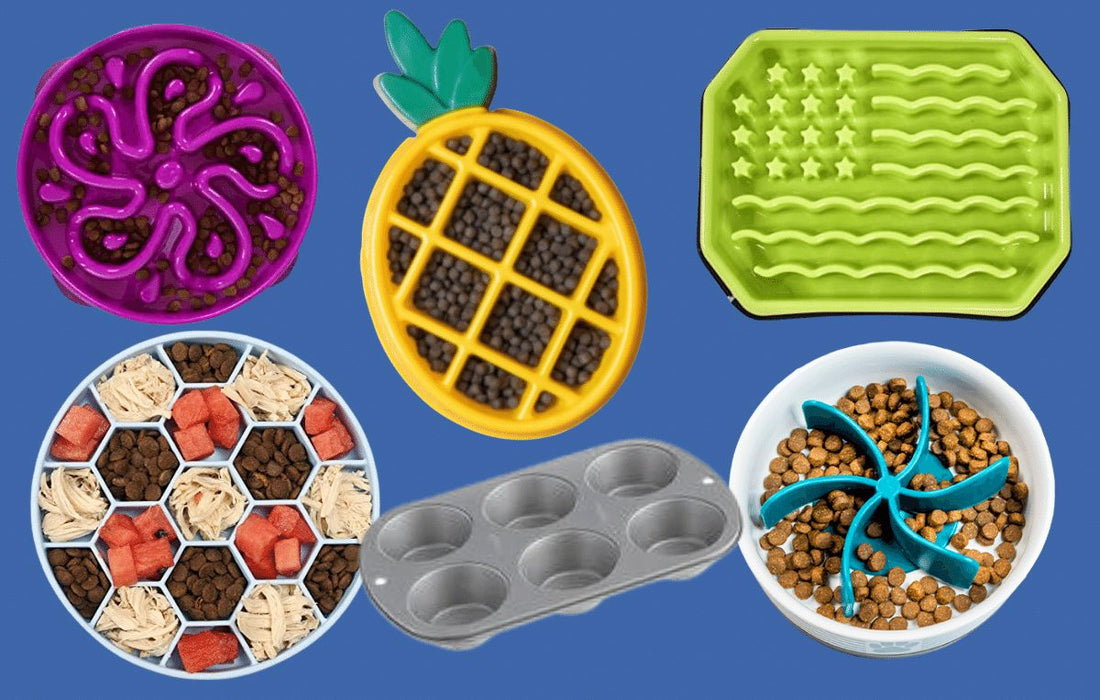
Slow Feeder Dog Bowl: What It Is & Why It Can Help Your Dog
Share
What are slow feeder dog bowls?
Slow Feeder Dog Bowls: A smart solution for dogs who eat too quickly, slow feeders help improve digestion, reduce bloating, and add a fun challenge to mealtime. Here’s everything you need to know about their benefits, types, and how to choose the right one. 🐾
1. Why Use a Slow Feeder Dog Bowl?
- 🚫 Reduces Bloating & Choking: Prevents dogs from swallowing too much air, which can cause bloating or gagging.
- 🩺 Prevents Vomiting & Indigestion: Slower eating helps reduce digestive issues like regurgitation and acid reflux.
- ⚖️ Prevents Obesity: Slowing down meals can help dogs feel full with less food, lowering the risk of overeating.
- 🧠 Mental Stimulation: Built-in obstacles make mealtime more engaging and rewarding.
2. How Do Slow Feeder Bowls Work?
These bowls feature ridges, spirals, or mazes that break up food into smaller compartments. Dogs must work around these barriers, using their tongue and nose, which naturally slows their eating pace. 🐕🦺
3. Types of Slow Feeder Dog Bowls
- 🟢 Plastic Bowls: Lightweight and affordable; choose BPA-free, dishwasher-safe options.
- 🔵 Stainless Steel Bowls: Durable and rust-resistant with simple designs.
- 🟠 Ceramic Bowls: Heavy and stable, perfect for preventing tipping over.
- 🧩 Puzzle Bowls: Interactive designs that mimic puzzle toys for added fun.
4. How to Choose the Right Slow Feeder Bowl
- 🐶 Size: Match the bowl to your dog’s size and portion needs.
- 🛠️ Material: Stainless steel for durability, ceramic for stability, or plastic for variety.
- 🧩 Difficulty Level: Start with simple designs for beginners; advanced eaters may enjoy intricate patterns.
- 🧽 Ease of Cleaning: Dishwasher-safe bowls make cleanup easy.
- 🚫 Non-Slip Base: Keeps the bowl steady during mealtime.
5. Training Your Dog to Use a Slow Feeder
- 🎉 Introduce Gradually: Place treats or a small portion of kibble to let your dog explore the bowl.
- 🏆 Reward Effort: Praise and reward your dog for using the slow feeder successfully.
- 🦴 Start with Wet Food: Wet food may be easier for beginners to maneuver.
6. Frequently Asked Questions (FAQs)
Q: Can puppies use slow feeder bowls?
A: Yes! Slow feeders help prevent overeating and are ideal for fast-eating puppies. 🐾
Q: Can slow feeders help with portion control?
A: Yes, they slow down eating, making it easier for dogs to feel full on normal portions. 🥩
Q: Can slow feeders be used for wet food?
A: Absolutely! They work well for both wet and dry food; you may need to experiment with the design that suits your dog best. 🥣
Q: Are there options for short-snouted breeds?
A: Yes, bowls designed for brachycephalic breeds have shallow ridges for easy access. 🐾
Q: How do I clean bowls with complex designs?
A: Dishwasher-safe bowls are the easiest to clean. For handwashing, use a brush to reach tricky areas. 🧽
7. Conclusion
A slow feeder dog bowl can make mealtime healthier and more enjoyable for your dog. Whether you’re reducing bloating, preventing obesity, or keeping your pup mentally engaged, these bowls are a fantastic addition to your pet care routine. 🐾 Choose the right size, material, and design for your dog’s needs, and watch them savor every bite!
